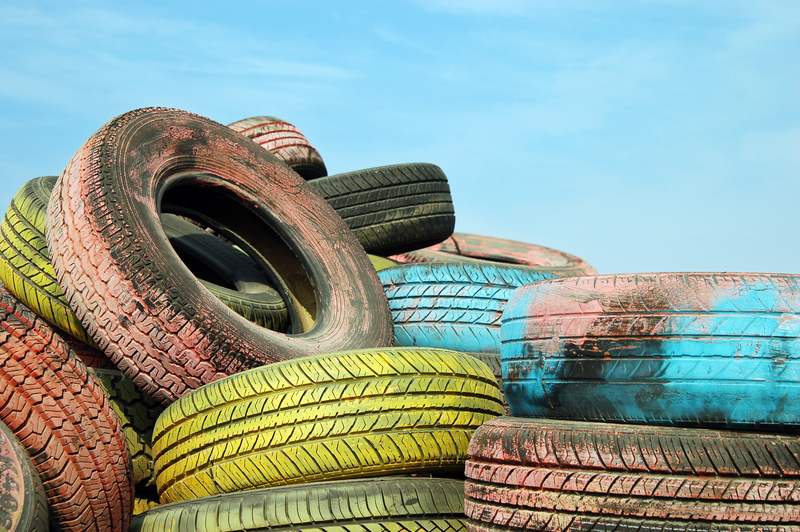Transform Your Closet: Smart Tips for Recycling Worn-Out Clothes
Is your closet overflowing with old garments you no longer wear? Don't toss them in the trash! Recycling worn-out clothes is an eco-friendly and creative way to declutter your space while minimizing environmental impact. In this comprehensive guide, we'll walk you through actionable, innovative, and practical solutions for giving your tired wardrobe a new lease on life. Whether you're looking to donate, upcycle, or use worn garments for practical projects, these tips will help you transform both your closet and your ecological footprint.
Why Recycle Worn-Out Clothes?
Textile waste is a rapidly growing global problem. The average consumer throws away an estimated 70 pounds of clothing per year, much of which ends up languishing in landfills. Unlike organic materials, synthetic fibers can take decades or even centuries to decompose -- releasing harmful chemicals along the way. Recycling your worn-out clothes not only conserves natural resources but also reduces waste, saves energy, and curbs pollution. Here are a few key reasons to prioritize the responsible disposal and reuse of your old clothes:
- Reduces landfill waste: Keeps textiles out of dumps, reducing environmental harm.
- Saves resources: Minimizes the need for raw materials like water and energy used in textile manufacturing.
- Cuts down on pollution: Lessens the emission of greenhouse gases from decomposing fabrics.
- Helps those in need: Donated clothing provides affordable options for others.
- Encourages creativity: Opens doors for unique DIY and upcycling projects.

How to Assess Your Wardrobe
Before you begin, it's time to take a hard look at your closet. A thoughtful assessment ensures that only the truly worn-out or unwanted clothes are recycled. Use these steps to conduct an effective clothing audit:
Step 1: Empty and Sort
- Remove all items from your closet and drawers.
- Divide clothing into three piles: keep, donate, recycle/repurpose.
Step 2: Inspect for Damage
- Check for stains, holes, tears, or irreparable damage.
- Decide what can be mended, upcycled, or must be recycled responsibly.
Step 3: Try On and Decide
- Try on suspect items to check fit and comfort.
- Be honest about what you actually wear -- if it's been untouched for a year, consider letting go.
Top Ways to Recycle Worn-Out Clothes
Not all clothes are created equal when it comes to recycling. Some items are suitable for donation, while others can be upcycled into something new or must be processed responsibly. Let's uncover the most effective strategies for recycling your worn-out garments.
1. Donate Usable Clothes
If your clothes are gently used and free from significant damage, donating is the most direct way to extend their life. Consider these options:
- Charity Shops and Thrift Stores: Well-known organizations like The Salvation Army, Goodwill, and Oxfam accept good-quality clothing for resale to help fund nonprofit work.
- Shelters and Community Groups: Local shelters often accept donations for those in need, especially warm items like coats and blankets.
- Online Swap Groups: Apps and platforms like Freecycle, Buy Nothing, and Facebook Marketplace connect you with people looking for free or affordable clothing.
2. Repurpose via Upcycling
For clothes that are too worn to donate, upcycling offers nearly limitless creative potential. Transform fabric into new, useful objects with these ideas:
- Turn t-shirts into cleaning rags: Cut old shirts into smaller pieces to reuse as durable, absorbent cloths.
- Make tote bags or pouches: Sew together colorful fabric scraps to create reusable shopping bags, cosmetic pouches, or lunch sacks.
- Create quilts or blankets: Combine swatches from sentimental garments into a cozy memory quilt.
- DIY pet toys and beds: Restuff pillows or create braided chew toys for your furry friends using tough denim or fleece.
- Fashion accessories: Craft headbands, scrunchies, bracelets, or necklaces out of fabric strips for a unique twist.
Think outside the box -- the possibilities for upcycling worn clothes are endless!
3. Textile Recycling Programs
Many retailers and local councils now offer specialized textile recycling programs for garments beyond repair. These initiatives ensure your fabrics are kept out of landfills and find new life through industrial recycling processes.
- Retailer Take-Back Programs: Brands like H&M, Levi's, and The North Face run in-store collection boxes where you can drop off any brand of used clothing. These textiles are then recycled into insulation, carpet padding, or new textiles.
- Community Recycling Centers: Municipal waste sites may offer textile collection points for both clothing and household fabrics (like towels and sheets).
- Specialized Recycling Companies: Organizations such as TerraCycle or Planet Aid accept mail-in textile recycling with detailed instructions on what's accepted and how to package your items.
4. Composting Natural Fibers
Did you know that pure cotton, wool, and linen garments are--they can be industrially or even home composted?* Remove all synthetic materials (like zippers, buttons, elastic, and polyester threads) and cut your fabrics into small pieces to speed up decomposition. Composting is ideal for natural fiber garments that are too damaged to repurpose or donate.
5. Hand-Me-Downs and Clothing Swaps
Give old clothes a second chance by passing them down to friends, family, or organizing a clothing swap event. These gatherings are a fantastic way to refresh your wardrobe without buying new and to foster a sense of community.
- Coordinate a swap party with friends and neighbors.
- Host a virtual swap using social media or local community platforms.
Clever DIY Projects for Your Worn-Out Wardrobe
Ready to channel your inner creator? Recycling worn-out textiles doesn't have to mean hauling them to a recycling center. Here are some clever do-it-yourself ideas for transforming faded, torn, or stained clothes into useful, attractive new items.
Memory Bears and Keepsakes
- Turn outgrown baby clothes or old t-shirts into stuffed animals or pillows as memorable gifts or home decor.
Home Decor and Storage Solutions
- Sew fabric bins, baskets, or drawer organizers from sturdy jeans and jackets.
- Make patchwork curtains or cushion covers for a bohemian touch.
Gardening Accessories
- Craft reusable plant ties from strips of old bedsheets.
- Cut sturdy trousers into kneeling pads or aprons for gardening.
Fashion Redesigns
- Crop, dye, or embroider: Breathe new life into basics with simple alterations or embellishments.
- Layer fabrics: Combine shirt sleeves and sweater scraps for unique, mixed-material pieces.
The Do's and Don'ts of Clothing Recycling
- Do: Wash clothes before donating or recycling.
- Do: Separate natural and synthetic fabrics if composting.
- Do: Remove non-fabric components like zippers and buttons for recycling or composting.
- Don't: Donate heavily soiled, moldy, or infested garments -- these should be recycled, not reused.
- Don't: Throw clothing in the general waste -- always look for reuse or recycling options first!
How to Find Textile Recycling Near You
Looking for the right place to send your tired threads? Follow these tips to locate reliable clothing recycling options in your area:
- Search local government and city websites for textile recycling locations.
- Contact major clothing retailers -- many now offer in-store collection points.
- Research nonprofit organizations and local charities accepting fabric donations.
- Use online recycling locators and apps for quick results.

Sustainable Shopping Habits for the Future
Reducing future clothing waste starts with mindful purchases. Embrace these sustainable shopping tips as you transform your wardrobe going forward:
- Buy quality over quantity: Invest in well-made clothes that last.
- Choose natural fibers: Cotton, linen, and wool are easier to recycle or compost than synthetics.
- Support ethical brands: Patronize labels committed to environmental responsibility and recycling initiatives.
- Think before you buy: Ask yourself if you really need a new garment or could upcycle something you already own.
Conclusion: Let Your Closet Make a Difference
Recycling worn-out clothing isn't just about reducing waste -- it's a direct way to contribute to a healthier planet and embrace a creative, frugal lifestyle. Whether you're handing down clothes, upcycling them into useful tools, or participating in community recycling programs, every action counts. Start by auditing your closet, get inspired with DIY projects, and make responsible choices with the future of fashion in mind.
By transforming your worn-out garments, you're not only revitalizing your own living space but also building sustainable habits that benefit generations to come. So roll up your sleeves -- transform your closet today and discover the endless possibilities of eco-friendly fashion!